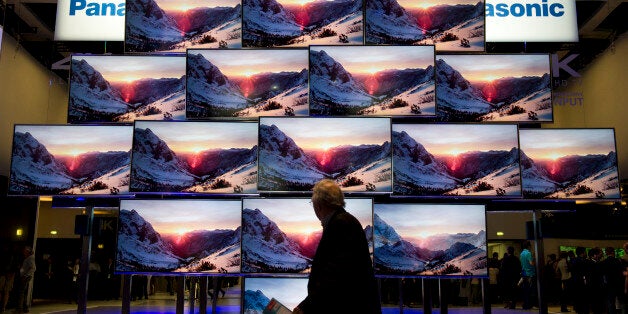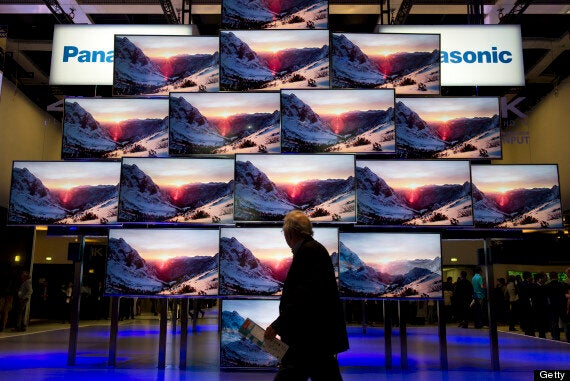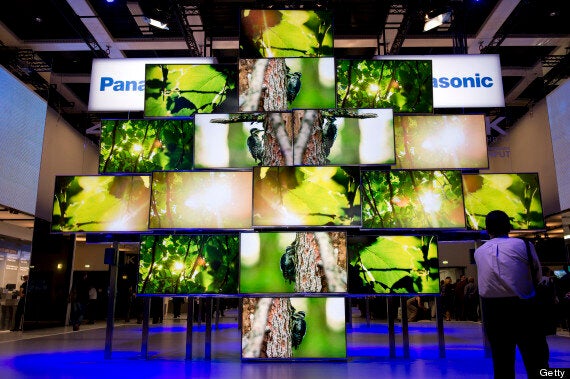
"Television - as a concept, and for a long time - is already dead."
It's a bold way for Laurent Abadie, CEO of Panasonic Europe -- whose company has just unveiled a ground-breaking new 4K telly at IFA in Berlin, and whose future depends in large part on lots of people buying big new screens -- to begin our interview.
And as you'd expect, that boldness doesn't quite last:
"Today TV is about a display device which gives access to any type of content," he said. "And the issue is how we can bring the best content, in a more interactive way, to the customer. That's what we want to demonstrate through the cloud, and through our software."
What Abadie is getting at is actually the central problem faced by Panasonic, Samsung, LG et al when readying the next next generation of '4K' TVs.
In technical performance alone, 4K (or 'Ultra HD') sets are genuinely a huge leap forward. Demos we saw at IFA this year in 60 FPS (enabled by the new HDMI 2.0 standard, present first in Panasonic's new WT600) demonstrated the vast visual difference between HD and UHD. As soon as you see one in person, you'll want one.
But in a world where TV is dead -- or at least, where TVs are no longer just about bigger and higher-def movies and sports, but gaming, streaming, making Skype calls and everything in between -- customers want more from their screen. They're just not sure whether they want to use their TV's usually quite clunky 'Smart' interface to do it, rather than their iPad, Sky Box or Xbox. The idea of browsing the web or looking at maps on a TV is a pleasant (and familiar) enough idea, for instance - but TVs have constantly struggled to show that they can do much more than video.
So how does Panasonic sell both technically great 4K screens, and integrated 'smart' interfaces, at the same time? And how can it hope to make both… good?

Above: Panasonic's new 4K 20-inch Windows 8.1 tablet, on sale for $4,000 this autumn
For Abadie - and Panasonic - the solution comes down to working out what a TV is actually for.
Tablets and smartphones are personal devices, Abadie says. The TV is still a public or family product. That's not a problem - it's an opportunity:
"They're quite different," he says. "As a personal product you tend to use it for yourself. A TV is still a family household equipment, where you look for large images that you want to share. It's quite different."
"The demand for display whether it's small, medium, large or huge, personal or household, is increasing," Abadie says. "But everything is inter-connected and must give access to any kind of content."
What he envisions is a device which can be both personal, and collaborative. It's a tough balance.
Andrew Denham, UK MD of Panasonic, agrees with the vision - and admits that there is still a "big job" to do in bringing it to fruition.
"The consumer knowledge of 'smart' is increasing, and there's a demand," Denham says. "Whether they fully understand the extreme opportunities it offers I think we still have a big job to do."
He says some of Panasonic's Viera Home Screen software is fulfilling that vision - it does provide users the chance to create multiple home screens, for instance - IE one for the kids, one for the grandparents, with different apps on both. But he says that the personalisation effort will have to keep moving forward.
"We're trying to bring the two together, the idea of personalisation of the home screen is to make that bridge… Because we can personalise it, and because the TV can know who's in front of it, we can present content that's relevant to that user. It's almost a big interactive device as well."

The move from SD to HD was a huge success for the TV industry. The supposed rise and gradual deflation of 3D, however, was not so transformative. In fact - as anyone with a draw full of unused glasses knows - it was a bit of a disaster. So how does 4K itself succeed where 3D TV has - arguably - failed?
"Most of our TVs are 3D, but it's a matter of software," says Abadie. "We were the company to promote Avatar... That was great, but right after the content produced in 3D was not reaching such amazing levels. That was the biggest problem. On top there are some issues with the glasses, but the biggest problem was the lack of content."
Does 4K have the same potential problem? Is there enough content in the pipeline?
"The content makers have a big appetite to make content in 4K," says UK MD Andrew. "A lot of content already mastered in big format film can be authored in higher-resolution. You can feel an upswell in appetite because the library becomes more sellable, going forward. The BBC for example, with nature programs, and sport, there's a natural evolution".
So how long will it be until 4K comes into its own - and the living rooms of "normal" (ahem) families?
"Two years. Content will come quickly," says Abadie. "We've already got video games, still photos, broadcaster interest… It's not a major problem. Content is coming."

Panasonic does have another long-term ambition for what your TV will do in the future - and this is where it gets a bit sci-fi, or a bit familiar, depending on whether you're sick of the phrase "internet of things" or not.
In its IFA press conference, Panasonic highlighted its conceptual - and still technically pretty aspirational - vision of the TV as the centre of your cloud-connected home.
It sees the TV as the "bridge" on your personal USS Enterprise, talking to your fridge, your coffee machine and your spin-dryer, giving you advice about meals and your social life and becoming the centre of your technical world. A sizeable chunk of Panasonic's annual €4.9 billion research budget is going towards making this a potential reality. And aspects of it were on show in a simple, but entertaining, in-person demo - again at IFA - where an actor was shown chatting with his connected home about recipes and upcoming events.
Stand demos aside, however, it's clear this vision is still years from fruition - and one that others (LG, Samsung, GE…) are heading towards as well. And one wonders if Panasonic has enough on its plate in trying to merge the traditional TV with the modern digital ecosystem, before it starts adding-in fridge freezers and blenders to the mix.
Either way, you can't fault it for lack of vision.
"For any type of customer, it's quite amazing what you could offer," says Abadie. "Most products are becoming terminals - connected, and interactive. You can talk, ask, request, comment to your products, and get a response in a very smart way."
Denham agrees - but admits that it's now time for Panasonic to execute on its vision for a non-TV TV too.
"I think it will happen very quickly. It's a matter of months," he said. "We've been talking convergence for fifteen years, at least. It's all about the capability of the core device, in terms of processing and what it can do. But we've crossed over now - in the last year and a half, so much of what we want to do has become genuinely possible. Now it's about how we integrate that, and who owns the content. That's the challenge, I think."